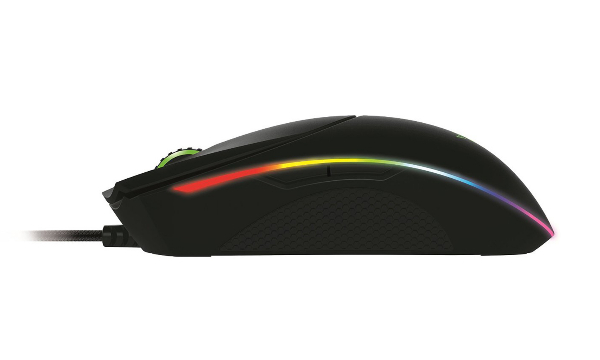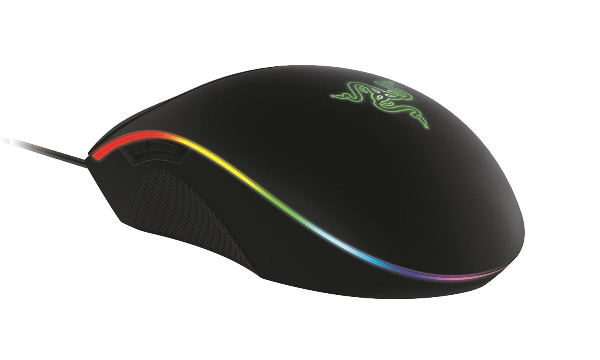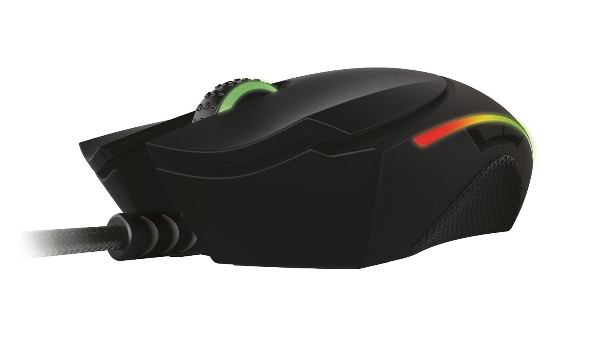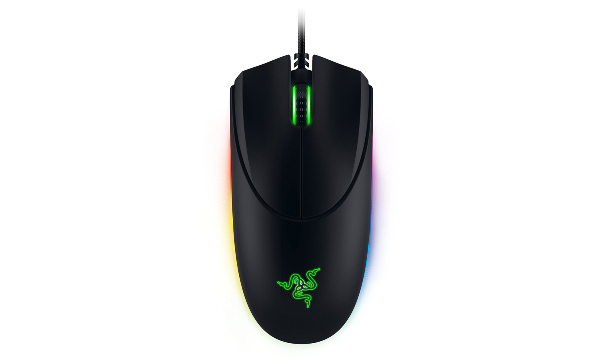Tom's Guide Verdict
The Razer Diamondback holds massive appeal for e-sports fans, but its unconventional design is a love-it-or-hate it proposition.
Pros
- +
Faithful revival of beloved mouse
- +
Full Chroma RGB lighting
- +
Great software
Cons
- -
Design can be uncomfortable
- -
Not suited to some game genres
- -
Expensive
Why you can trust Tom's Guide
After a long hiatus, Razer has revived its beloved Diamondback mouse, an unusually long, thin peripheral with a striking visual design that won over competitive gamers in a big way back in 2004. The Diamondback has been missing from the market since 2007, but the 2015 Razer Diamondback ($90) is back in business, boasting a slick new design, colorful backlighting and a powerful software suite. Fans can rejoice, right?
The answer is maybe. Although the Diamondback is still one of the most unconventional mice on the market, it has much stiffer competition today than it did a decade ago. The price is high, the buttons feel a bit flimsy and the design is perhaps not as comfortable as you remember. The Diamondback still holds massive appeal for those in the burgeoning e-sports scene, but others might be better served by more conventional mice.
Design
Unless you played around with one of the previous three Diamondback models, this mouse is probably unlike anything you've held before. The Diamondback is quite long and thin, measuring 4.9 x 2.6 inches. Compare this to Razer's better-known DeathAdder (5.0 x 2.8 inches) or the Logitech G502 Proteus Core (5.2 x 3.0 inches).
MORE: Best Gaming Mice
At first, I thought that perhaps the design was meant to facilitate a palm grip, but after playing with it for a few hours, I realized that the mouse is not long enough, even for a small-handed player like me. Claw grip seems like the logical alternative — except that it's not comfortable to grip this mouse for long periods of time. Rather than having to squeeze my fingers together, I wound up holding the mouse very loosely for most of my games, gripping it only when the action heated up. It's not hard to see how such a conformation would be advantageous for competitive games, but it's not ideal for everyday play.
Beyond that, one big feather in the Diamondback's cap is its totally ambidextrous design. Both sides of the mouse have a coarse rubber grip, and each side has two programmable buttons. There are seven buttons, all told: a left button, a right button, a clickable scroll wheel and four thumb buttons (two on each side). You'll probably want to disable whichever side you're not using, as they're quite easy to click accidentally. Otherwise, the buttons are a bit on the small side and feel flimsy, but it's a fair compromise for a mouse that can suit lefties and righties equally well.
Features
Like other recent Razer products, the Diamondback is part of the company's Chroma line, which gives it access to 16.8 million colors for backlighting. In order to control these lights, as well as the other parts of the mice, users have access to the Razer Synapse 2.0 software, which controls almost every modern Razer product, from keyboards to mice to headsets.
The lighting is pretty, and I especially like that when you change colors, it fades tastefully from one to the next rather than initiating the jarring reset common to most mice. Having multiple colors and lighting effects is especially useful, since you can use the Synapse software to link the Diamondback with various games. Each game can have its own unique color, button profile and dots-per-inch (DPI) sensitivity. Here's a bit of context: The original Razer Diamondback went up to 1,600 DPI, which some fans decried as excessive. The 2015 model goes up to 16,000.

I've always found the Razer Synapse software to be a comprehensive and intuitive tool for all Razer accessories, and the Diamondback is no exception. Creating new profiles, linking games, adjusting backlighting, reprogramming buttons, making macros and choosing sensitivity settings were all quite simple. You can even tune the mouse to a new surface, or select an existing Razer mouse pad for maximum synchronicity.
Performance
To see how the Razer Diamondback performed, I ran through chunks of Titanfall, StarCraft II: Whispers of Oblivion, Batman: Arkham Knight and Star Wars: The Old Republic with it. In terms of raw performance, it worked well across the board. However, as described above, it worked much better with some genres than others.

First-person shooter Titanfall and strategy game Whispers of Oblivion are where the mouse performed best. In the former, rapid, twitch-based movements are the order of the day, and the Diamondback's sleek profile helped my mech pilot avoid certain death at the hands of a smart pistol more than once. In Whispers of Oblivion, I had to look around the map frequently to keep an eye on my army and my home base, and found the Diamondback to be very responsive.
MORE: Most Anticipated Games
However, Arkham Knight and The Old Republic didn't fare as well. While playing an action/adventure game with a mouse rather than a controller is rarely ideal to begin with, the Diamondback simply was not very comfortable to keep hold of constantly while I navigated my way through a troubled Gotham City. Likewise, mapping my two most frequently used skills to the thumb buttons in role-playing game The Old Republic wasn’t a comfortable configuration, and I found myself using the keyboard more often.
Bottom Line
Razer fans have been clamoring for the Diamondback's return ever since it disappeared eight years ago, but I'm beginning to see why it had such a long absence. It's not that the Diamondback is bad; far from it. It's just a niche product in a world where gaming mice can increasingly handle a much wider variety of game genres and hand shapes. Throw in the fact that it costs $10 to $20 more than most competing mice, and you should definitely give it a second thought before purchasing it. Razer's own DeathAdder Chroma is a more versatile, comfortable mouse, while the Logitech G303 Daedalus Apex is also ideal for e-sports. Each of those devices costs $70.

Fans of the old model can pick up the new Diamondback without hesitation and enjoy its expanded DPI, its colorful backlighting and its full ambidexterity. Newcomers who wonder what all the hubbub was about will definitely want to get some hands-on time with the Diamondback before taking the plunge; like the snake for which it's named, it's intriguing, but potentially dangerous.
Marshall Honorof is a senior editor for Tom's Guide, overseeing the site's coverage of gaming hardware and software. He comes from a science writing background, having studied paleomammalogy, biological anthropology, and the history of science and technology. After hours, you can find him practicing taekwondo or doing deep dives on classic sci-fi.


